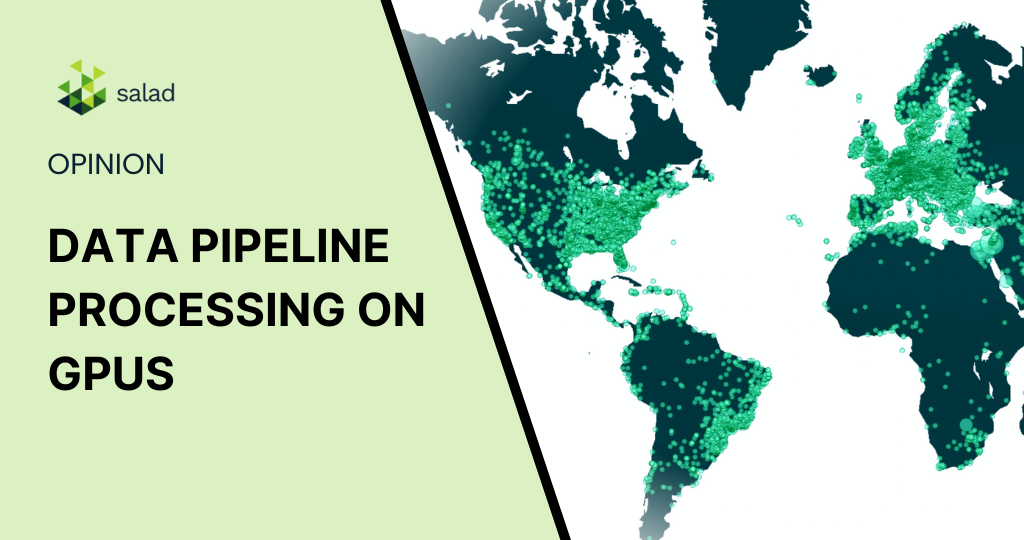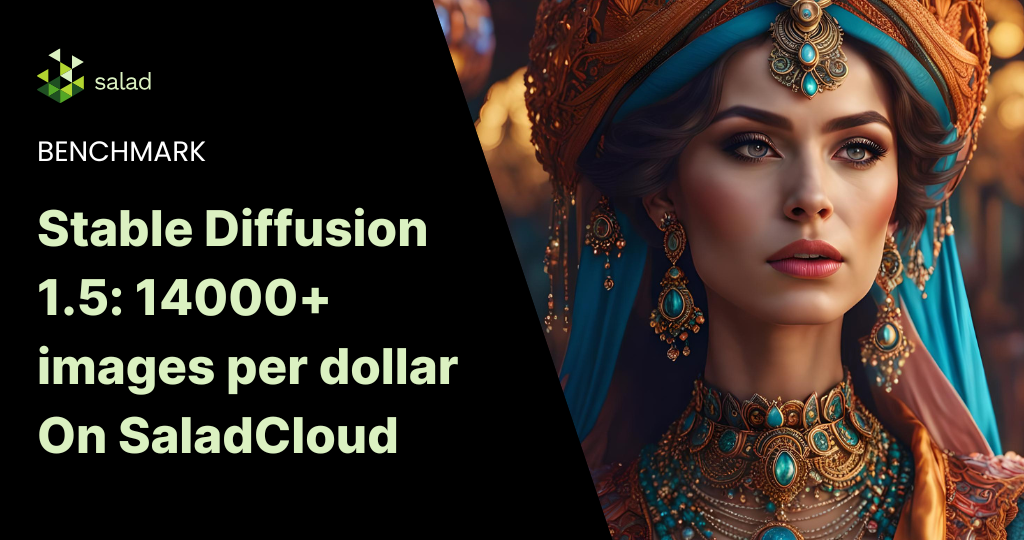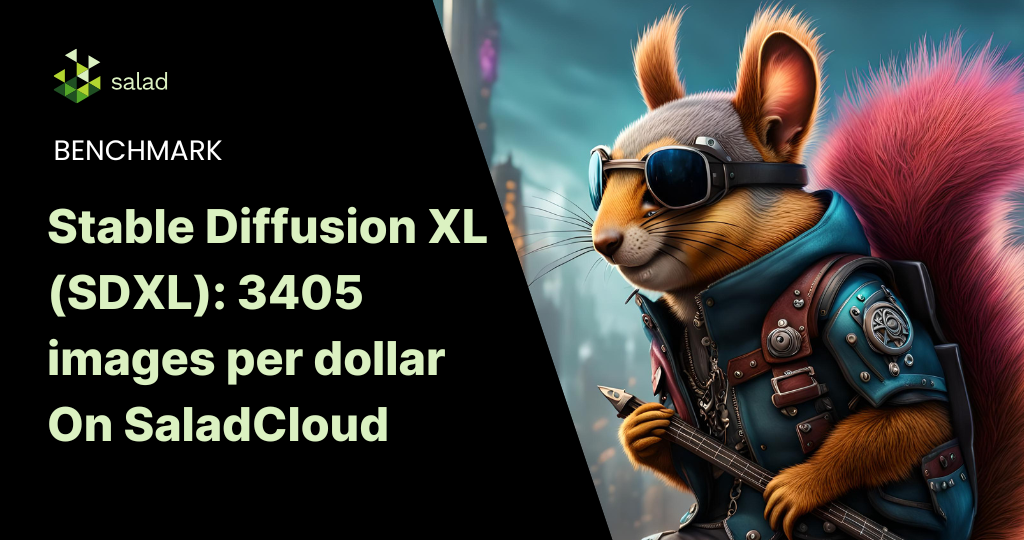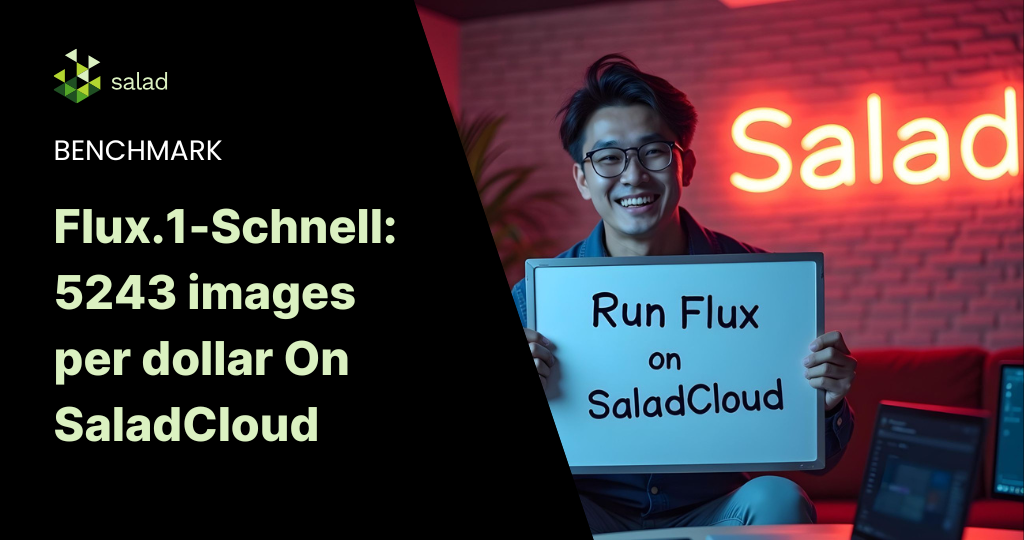You can’t train foundational AI models without good data, and lots of it. Data pipeline processing is a crucial task for any team that is building or even fine-tuning its own models. It involves loading, transforming, and analyzing large amounts of data from various sources, such as images, text, audio, video, logs, sensors, and more. Data pipeline processing can be used for tasks such as data cleaning, noise reduction, feature extraction, data augmentation, data validation, and dataset restructuring.
However, data pipeline processing can also be very challenging, especially when dealing with massive volumes of data and complex computations. If not done properly, the result is a slow, expensive, and inefficient process. This is where GPU clouds come in handy.
Why data pipeline processing should be done on GPUs
GPUs can perform many operations simultaneously, which makes them more efficient than CPUs for certain types of tasks. GPUs are especially good at handling data-intensive and compute-intensive tasks, such as image processing, video processing, and machine learning.
The benefits of using GPUs for this task are many:
– GPUs speed up data pipeline processing by orders of magnitude compared to CPUs. For example, Google Cloud reported that using GPUs to accelerate data pipeline processing with Dataflow resulted in an order-of-magnitude reduction in CPU and memory usage.
– GPUs reduce the cost of data pipeline processing by using less resources and power, compared to CPUs. For example, NVIDIA reported up to 50x faster performance and up to 90% lower cost to accelerate genomic workflows using GPUs compared to CPUs.
– GPUs simplify data pipeline processing by enabling users to perform data transformations and machine learning tasks in the same pipeline without switching between different platforms or tools. For example, Cloud to Street, a company that uses satellites and AI to track floods, reported that using GPUs to perform image processing and machine learning tasks in Dataflow pipelines reduced the complexity and latency of their workflows.
Data processing in times of GPU shortage & high prices
Despite the advantages of using GPUs for data pipeline processing, users may also face some challenges and limitations. One of the main challenges is the GPU shortage. The AI rush for GPUs and the resulting high cost on public clouds affect the availability and affordability of GPUs.
The GPU shortage has led to high prices for renting GPUs, particularly enterprise grade chips on major cloud providers. This makes it harder for companies to access and afford GPUs. It also affects the profitability and competitiveness of businesses who rely on GPUs for their data pipeline processing applications.
How consumer GPUs are the solution to this problem
One solution to the GPU shortage and the high prices is to use consumer GPUs for data pipeline processing. There is an estimated 400 Million GPUs in people’s home, many of which are compatible for multiple use cases like AI inference, data processing, etc. Consumer GPUs are always connected to the internet and yet are typically used for gaming sporadically, leaving them underutilized for most of the day.
Most consumer GPUs lie unused for almost 20-22 hrs a day.
Consumer GPUs are more cost effective and more widely available than enterprise grade GPUs, and they still offer high performance and quality for data pipeline processing.
However, using consumer GPUs for data pipeline processing also poses some challenges and limitations, such as the compatibility, scalability, security, and reliability of consumer GPUs. To overcome these challenges and limitations, companies need a platform or a service that can enable them to use consumer GPUs in an easy, efficient, and secure way.
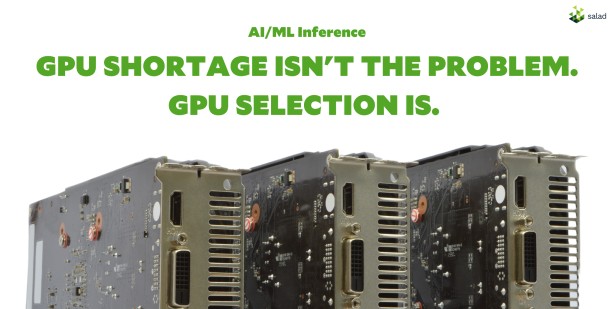
In this blog, we highlight how choosing the right GPU – between a high-end AI-focused GPU and lower-end consumer GPUs – based on your use case is the crucial factor in overcoming the GPU shortage and high cloud costs.
Distributed clouds: The perfect recipe for data pipeline processing
Enter distributed clouds. SaladCloud is a distributed cloud of consumer GPUs that is perfect for data pipeline processing. We do this by connecting companies that need GPUs with gamers who have idle GPUs that they can share or rent.
SaladCloud unlocks the following benefits for data pipeline processing:
– Access to a large and diverse pool of consumer GPUs, with over 10,000+ GPUs available, starting from $0.02 per hour. Companies can choose from different types, models, and quantities of consumer GPUs, depending on their needs and preferences.
– Effortlessly run common frameworks, such as TensorFlow, PyTorch, Keras, Scikit-learn, and more, on public datasets, such as ImageNet, MNIST, and CIFAR-10.
– The ability to source video, audio, image or text data from the public web, to be processed at massive scale using open source models such as whisper-large or wave2vec.
– Scale up and down at a massive scale, powering data pipelines in batch job processing without having to deal with the scalability or the reliability of consumer GPUs. Companies can use SaladCloud to submit their jobs as batch jobs, and SaladCloud will automatically allocate and manage the consumer GPUs for these jobs. Teams can also monitor and control their jobs through either a web interface or API.
– With isolated containers on every machine, SaladCloud offers a secure and private way, without having to worry about the nuances of running on consumer GPUs. All container images are fully encrypted during transit and rest, and are only unencrypted for actual runtime during which there is a proprietary runtime security and node reputation system in place to keep workloads private and secure. Once a worker is done with a job, the entire VM, along with all data, is destroyed.
Try SaladCloud today
Data processing is currently the bottleneck for the AI industry, but this will be tackled with millions of consumer GPUs.
Obtaining quality datasets is a mission-critical task for any company building foundational AI models, yet it is a challenging task, especially when dealing with large and complex data and computations. Leveraging massive clusters of consumer GPUs is the solution.
Companies can use SaladCloud to power their data processing pipelines and tap into a global pool of tens of thousands of GPUs at the industry’s lowest prices. Salad’s fully managed container service makes scaling up and down a breeze for DevOps teams.
To try SaladCloud for your data pipeline processing needs, reach out to us below.
